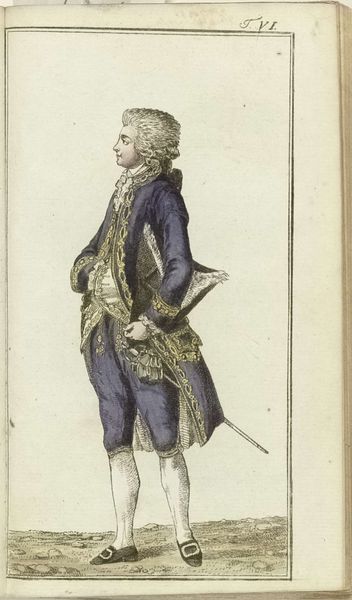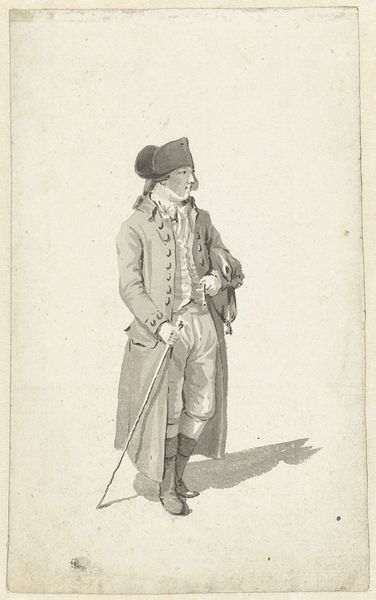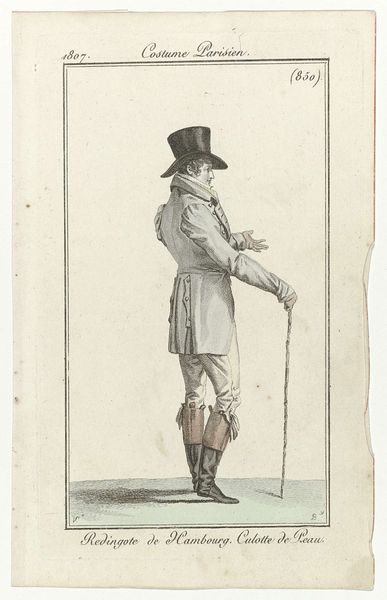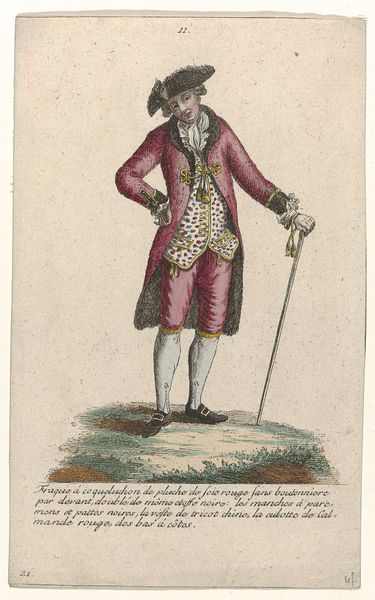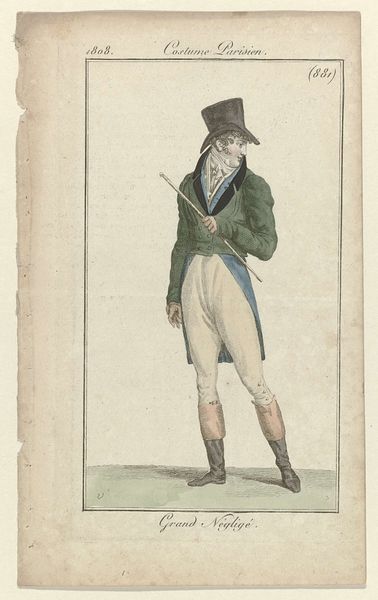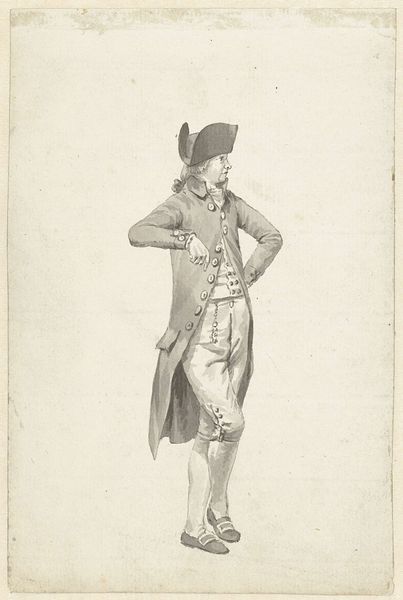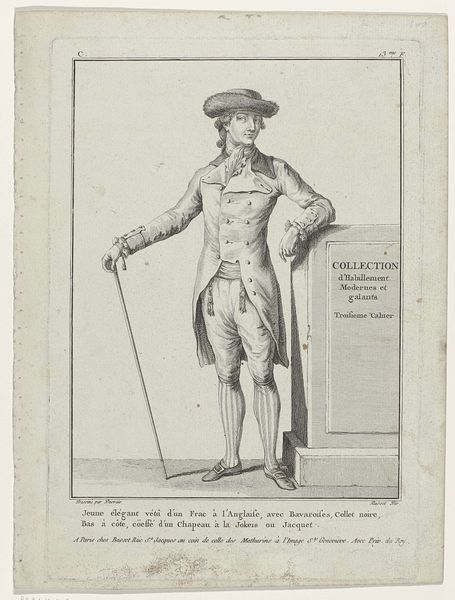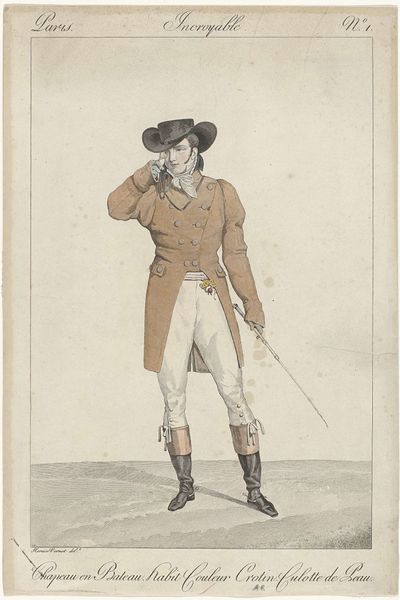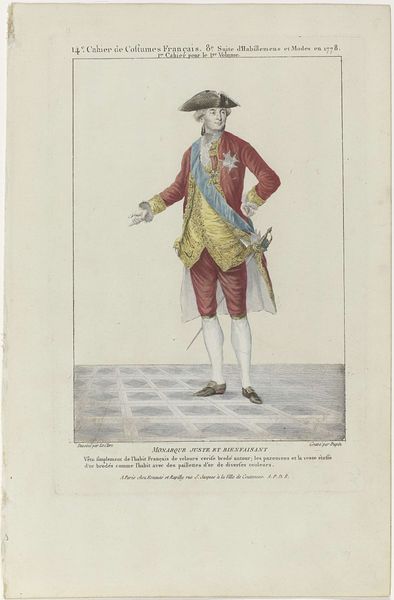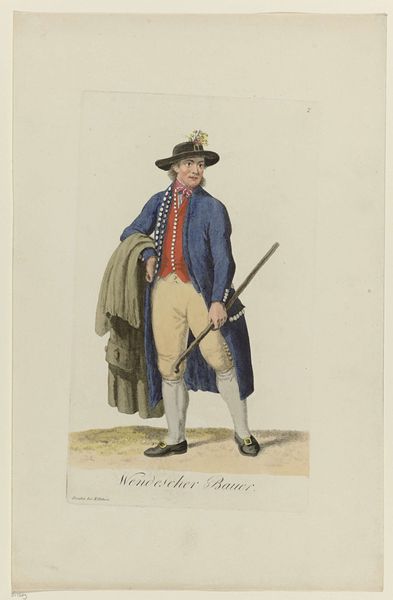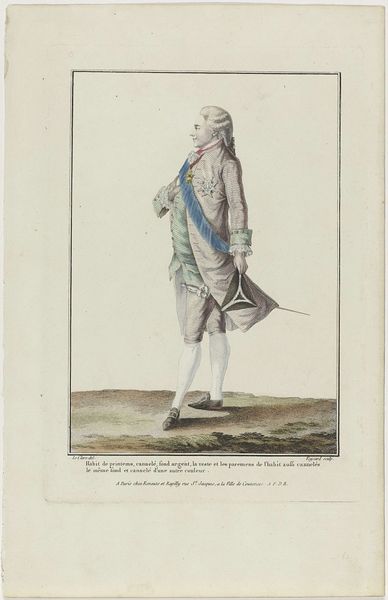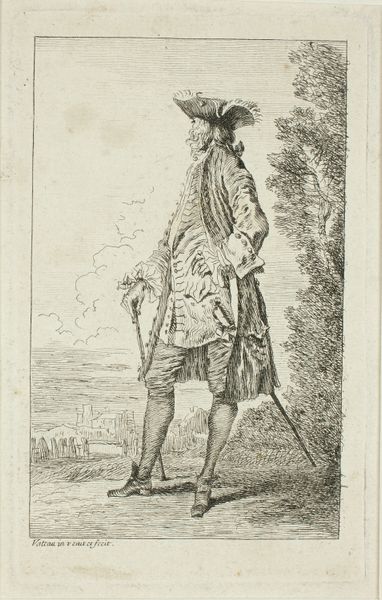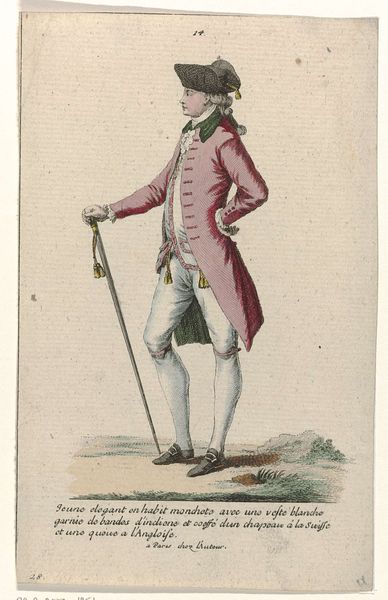
Jeune Elégant Se promenant aux Palais Royal pour fixer les Caprices de sa Soiré 1786
0:00
0:00
Dimensions: height 190 mm, width 130 mm
Copyright: Rijks Museum: Open Domain
Curator: This is "Jeune Elégant Se promenant aux Palais Royal pour fixer les Caprices de sa Soirée," by Laurent Guyot, from 1786, currently held in the Rijksmuseum. It’s rendered in watercolour and coloured pencil. Editor: There’s a delicate quality to the rendering. I’m intrigued by how much information the artist conveys with seemingly simple materials. What do you see in this work? Curator: It’s a study in surfaces, isn't it? Look at the texture implied by the coloured pencil on the coat. Guyot uses inexpensive and readily available materials, watercolour and pencil, to depict luxurious clothing. Consider the social context: France on the eve of revolution, a society obsessed with outward appearances, and artists exploring new markets. The work challenges our typical understanding of value by using mundane means to portray elegance. What kind of labour went into his clothes compared to that of the artist? Editor: So, you’re suggesting the artwork itself, by its very medium and process, acts as a kind of commentary on the socio-economic disparities of the time? That's interesting, I never would have thought about it that way. Curator: Precisely! How do these materials become part of the message? What does the *making* of art tell us about how it functions? Editor: I see now, examining the work this way highlights the contrasts between the accessible artistic process and the inaccessible opulence it portrays, really grounding it in its historical moment. Curator: Absolutely. Thinking about art through the lens of its material existence really changes our perception. Editor: I've definitely gained a new perspective on analyzing art today, especially by thinking about the message inherent in the making of it.
Comments
No comments
Be the first to comment and join the conversation on the ultimate creative platform.
